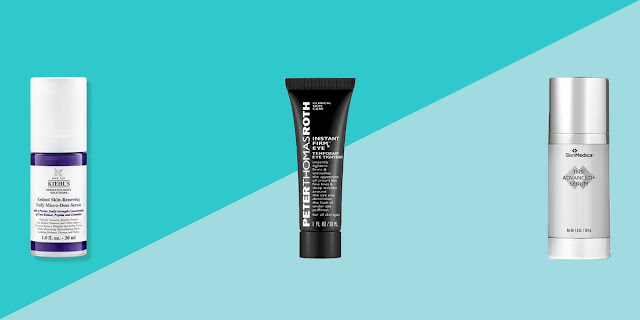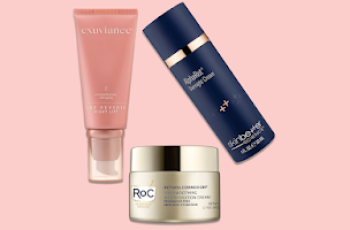
Should Hyaluronic Acid be used before or after Vitamin C?
By now you all know how Hyaluronic Acid and Vitamin C are equally valued by skincare experts. Both have a wide range of skin benefits that work on different layers of the skin to improve skin tone and overall appearance. As amazing as these ingredients are, the biggest hurdle is how we can use these skincare heroes to achieve your skin goals.
Without further ado, let’s take a look at whether Hyaluronic Acid should be used before or after Vitamin C.
Can Hyaluronic Acid and Vitamin C be used together?
These ingredients work successfully together and are actually considered a highly effective skin duo. Hyaluronic Acid balances and hydrates the skin, allowing the outer surface of the skin to function fully with the proper hydration level. This is important for maintaining the overall health and appearance of the skin and enabling it to fight free radical damage like pollution, UV radiation, and other environmental skin stressors. Hyaluronic Acid moisturizes the skin, acting like a wet sponge, making it more absorbent and allowing other ingredients to penetrate deeper into the underlying layers. This also helps Vitamin C reach the dermis layer of the skin to more effectively treat the skin and reduce dark spots and pigmentation. For more information on using hyaluronic acid and vitamin C together, see our dedicated blog post.
Which is better, vitamin C or hyaluronic acid serum?
Both ingredients offer a range of skin benefits targeting different issues, making hyaluronic acid and vitamin C an effective complement to each other in your daily skincare routine.
Vitamin C
The main benefit of vitamin C is its ability to minimize skin damage caused by UV radiation. It achieves this because it contains a high amount of antioxidants and boosts the body’s natural collagen production, resulting in plumper, more youthful skin.
Hyaluronic acid
This acid acts as a humectant, which means that water around the skin or contained in other product formulas is absorbed into the skin and retained there. This is how hyaluronic acid can continue to work throughout the day, keeping the skin in its healthiest state. Not only does this help the other ingredients work better, but it also fights free radical damage more effectively.
If you are considering which of these ingredients is better, I can honestly say that using both is your best option as it will result in an effective daily skincare routine that will achieve the best results.
How to use retinol, vitamin C and hyaluronic acid together?
If you incorporate Vitamin C, Retinol, and Hyaluronic Acid into your daily regimen, there are some important points you should keep in mind to avoid unwanted skin irritation or reactions.
Retinol
This powerful form of Vitamin A is considered one of the most effective ingredients in skincare and must be used correctly as it can dry out and cause your skin to peel. This is a common side effect when you first introduce Retinol into your routine, but don’t worry as it is short-lived. You will find that Retinol speeds up the skin cell renewal process, making the skin look younger and significantly reducing the signs of fine lines, wrinkles, spots, or breakouts.
When it comes to using Retinol, Hyaluronic Acid, and Vitamin C together to prevent skin irritation, I recommend incorporating these products into your daily routine as follows:
Morning Skin Care Routine
Vitamin C
Hyaluronic Acid
Not only does using Vitamin C in your morning routine ensure a bright start to the day, but the ingredient’s high antioxidant content ensures that your skin is protected from free radical damage. While protecting your skin, it also works tirelessly to reduce the appearance of dark spots and hyperpigmentation. You can also boost your skin’s hydration by using hyaluronic acid, which moisturizes the skin and improves its functionality.
Evening Skincare Routine
Retinol
Hyaluronic Acid
Remember to follow the skin care rules when using retinol. You can also use it during your evening routine. This is because retinol loses its effectiveness when exposed to UV rays, rendering it useless and unable to produce results on the skin. By combining it with a serum containing hyaluronic acid, you can combat further skin dryness and see results faster.
What is the order of application of hyaluronic acid?
This really depends on you and your skincare products. I mentioned the rules of application for daily skin care in a previous blog post. Generally speaking, it is best to apply according to the consistency of the product. Try to apply the products in order from thinnest to thickest. This will determine at which stage you apply hyaluronic acid. Of course, remember that hyaluronic acid works its magic no matter when you use it, giving you a hydrated, healthy complexion.
Can I use hyaluronic acid every day?
You actually can. In fact, you can use it twice a day because it is gentle yet effective in moisturizing the skin. Hyaluronic acid occurs naturally in the body and is one of those skincare ingredients that all skin types can use without worrying about unwanted skin irritation or reactions.
So you can learn more about hyaluronic acid and whether you should use it before or after vitamin C here. Visit us on Instagram for more expert skincare tips, exclusive codes, giveaways and product launches.


